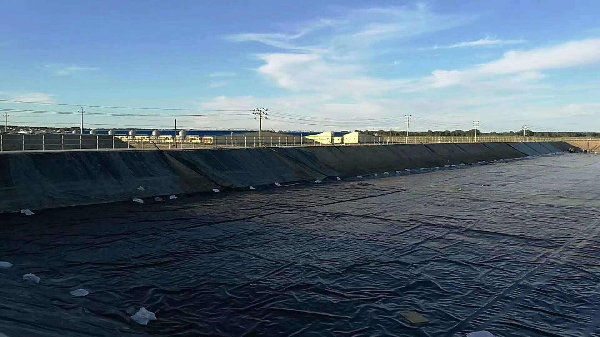Geomembrane is a waterproof and barrier material based on high molecular weight polymers. It is mainly divided into low-density polyethylene (LDPE) geomembranes, high-density polyethylene (HDPE) geomembranes, and EVA geomembranes. Knitted composite geomembrane is different from general geomembranes. Its characteristic is that the intersection of longitude and latitude lines is not curved, and each is in a straight state. Using braided thread to firmly tie the two can achieve uniform synchronization, withstand external forces, distribute stress, and when the applied external force tears the material, the yarn will gather along the initial crack, increasing tear resistance. During warp knitting composite, the warp knitting thread is repeatedly passed between the warp, weft, and fiber layers of the geomembrane to weave the three into one. Therefore, warp knitted composite geomembranes not only have the characteristics of high tensile strength and low elongation, but also have the waterproof performance of geomembranes. Therefore, warp knitted composite geomembrane is an anti-seepage material that has the functions of reinforcement, isolation, and protection. It is a highly advanced application of geosynthetic composite materials internationally today.

High tensile strength, low elongation, uniform longitudinal and transverse deformation, high tear resistance, excellent wear resistance, and strong water resistance.. Composite geomembrane is a geotextile anti-seepage material composed of plastic film as the anti-seepage substrate and non-woven fabric. Its anti-seepage performance mainly depends on the anti-seepage performance of the plastic film. The plastic films used for anti-seepage applications both domestically and internationally mainly include (PVC) polyethylene (PE) and ethylene/vinyl acetate copolymer (EVA). They are a type of polymer chemical flexible material with a small specific gravity, strong extensibility, high adaptability to deformation, corrosion resistance, low temperature resistance, and good frost resistance. The service life of composite geomembranes is mainly determined by whether the plastic film loses its anti-seepage and water-resistant properties. According to Soviet national standards, polyethylene films with a thickness of 0.2m and stabilizers used in water engineering can work for 40-50 years under clear water conditions and 30-40 years under sewage conditions. Therefore, the service life of composite geomembrane is sufficient to meet the anti-seepage requirements of the dam.
Post time: Jul-12-2024


